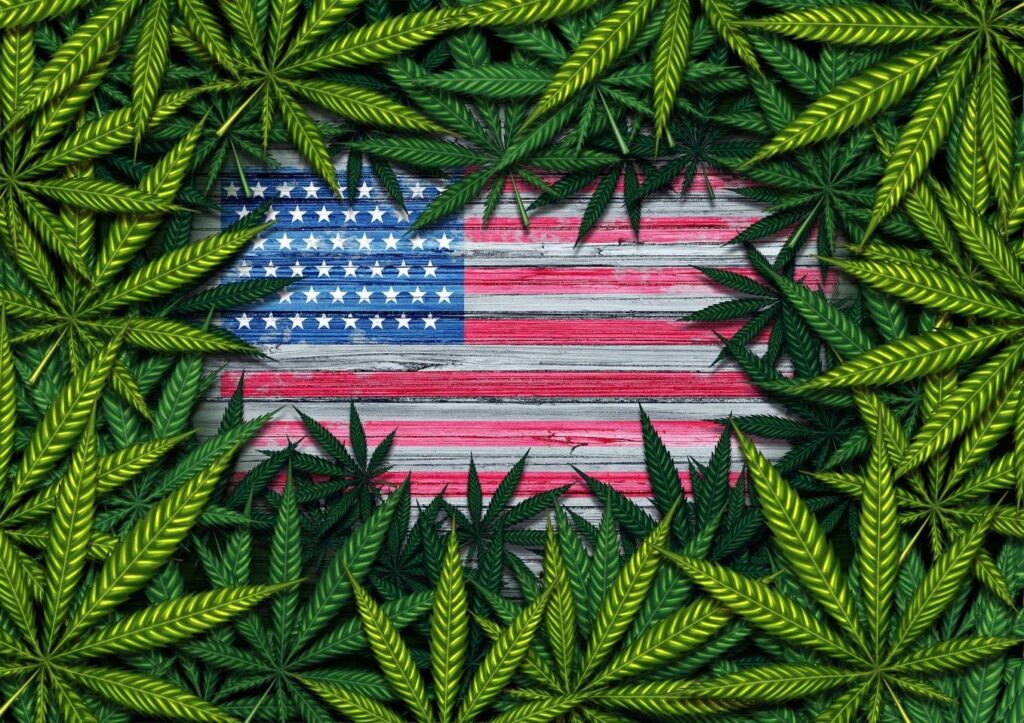Weed the People: With 70 percent of Americans now in favor of legalization, the DEA could play a major role in ending pot prohibition this year.
Recreational cannabis is now legal in 24 states and three more could legalize some form of marijuana sales this year. But will the DEA finally remove pot from the list of the world’s most dangerous drugs?
Last year was a roller coaster for the cannabis industry. Both presidential candidates, Kamala Harris and Donald Trump, came out in favor of reforming the nation’s marijuana laws. But when it came to ballot measures, efforts to legalize adult-use failed in Florida, North and South Dakota. Nebraska, on the other hand, legalized medical marijuana, making it the 39th state to allow for medicinal use of cannabis. In December, the Drug Enforcement Administration held its first meeting about the effort to reclassify marijuana as a less dangerous drug—it is currently in Schedule I, the same category as heroin and LSD.
Even though federal reform is at a standstill, the majority of Americans live in a state where marijuana is legal. Currently, 24 states and Washington, D.C., have legalized recreational use for adults 21 years and older and 39 states have medical programs. Cannabidiol (CBD), another active ingredient in cannabis that is associated with some medical benefits but does not get users high, is federally legal and an additional 10 states passed laws to permit the use of products containing CBD and small amounts of tetrahydrocannabinol (THC), the compound found in marijuana responsible for getting people “stoned.” That leaves only one state—Idaho—that does not allow for any kind of state-sanctioned marijuana or cannabis-derived product use.
When it comes to hemp-derived THC, which packs the same punch as weed and is federally legal, nearly all Americans can go to a smoke shop, wellness store or gas station and pick up some edibles or vapes. Despite all of this, marijuana is still illegal at the federal level.
With President-elect Donald Trump returning to the White House later this month, cannabis company executives, advocates and lawyers are optimistic about 2025 being a good year for the budding industry.
The legendary litigator David Boies, who has brought a case seeking to federally legalize state-licensed marijuana, told Forbes late last year that a second Trump term will bode well for weed.
“We are much more likely to see positive change,” said Boies. “Trump’s default is to let the states have it. His inclination is to let people do what they want.”
In the states that have legalized weed, there has been a lot of growth. New York state, which had a rocky roll out plagued with a wild west of unlicensed pot shops, is gaining traction and surpassed $1 billion in legal cannabis sales just two years after its launch. California, which is home to the nation’s largest legal marijuana market, just legalized Amsterdam-style cafes where customers can toke up.
Paul Armentano, deputy director of nonprofit marijuana legalization advocacy group NORML, says that while it is exciting to ponder changes at the federal level, 2025 will be defined by changes made in individual states.
“I think the last four years showed us the reality that executive actions can only go so far,” says Armentano. “The fact is that the Biden Administration was arguably the administration with the most sympathy for marijuana policy reform that we’ve ever had but the power to change federal marijuana laws doesn’t lie with the President. That power lies with Congress.”
H/T: www.forbes.com
You can view the whole article at this link Where Is Cannabis Legal? A Guide To All 50 States



